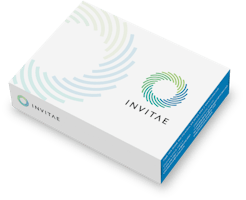
Invitae Krabbe Disease Test
Test code: 06173 •
Test description
The Invitae Krabbe Disease Test sequences the GALC gene. Pathogenic variants in GALC lead to Krabbe disease, which is caused by deficient activity of the lysosomal hydrolase galactosylceramide beta-galactosidase. An individual with Krabbe disease is either homozygous or a compound heterozygote for pathogenic variants in GALC.
Several US states currently include screening for Krabbe disease on their newborn screening panels by enzymatic analysis of galactocerebrosidase. GALC testing is intended for babies who test positive on newborn screening and for individuals in whom Krabbe disease is suspected. Krabbe disease may also be indicated by abnormal brain MRI images or cerebrospinal fluid protein levels. The early infantile form is rapidly progressive and usually fatal. Later-onset Krabbe disease may have a more slowly progressive and milder course.
Ordering information
Turnaround time:
10–21 calendar days (14 days on average)New York approved:
YesPreferred specimen:
3mL whole blood in a purple-top EDTA tube (K2EDTA or K3EDTA)Alternate specimens:
Saliva, buccal swab, and gDNA are also accepted.Learn more about specimen requirementsRequest a specimen collection kitClinical description and sensitivity
Clinical description:
Krabbe disease is a rare progressive neurodegenerative lysosomal storage disorder whose main feature is leukodystrophy. There are four forms of Krabbe disease: early infantile, later onset, adolescent, and adult. The infantile form manifests at a few months of life with feeding problems, gastroesophageal reflux, irritability, and clasped thumbs. Increased muscle tone (hypertonicity) can be seen in the initial phase of disease, but it is followed by low muscle tone (hypotonia). Seizures are a common feature in affected infants, who usually die before the age of 2 years. There is no enzyme replacement available. Hematopoietic stem cell transplant (HSCT) before the onset of symptoms currently provides the only treatment option.
Later onset should be considered in individuals who exhibit a loss of milestones and whose brain MRIs show evidence of leukodystrophy. The affected individuals present with visual loss and difficulty with walking. Signs and symptoms in the later-onset group are variable. HSCT in older, mildly affected individuals has been undertaken; some individuals are said to have shown improvement, and others show less-serious progression of disease.
Assay information
Invitae is a College of American Pathologists (CAP)-accredited and Clinical Laboratory Improvement Amendments (CLIA)-certified clinical diagnostic laboratory performing full-gene sequencing and deletion/duplication analysis using next-generation sequencing technology (NGS).
Our sequence analysis covers clinically important regions of each gene, including coding exons and 10 to 20 base pairs of adjacent intronic sequence on either side of the coding exons in the transcript listed below, depending on the specific gene or test. In addition, the analysis covers select non-coding variants. Any variants that fall outside these regions are not analyzed. Any limitations in the analysis of these genes will be listed on the report. Contact client services with any questions.
Based on validation study results, this assay achieves >99% analytical sensitivity and specificity for single nucleotide variants, insertions and deletions <15bp in length, and exon-level deletions and duplications. Invitae's methods also detect insertions and deletions larger than 15bp but smaller than a full exon but sensitivity for these may be marginally reduced. Invitae’s deletion/duplication analysis determines copy number at a single exon resolution at virtually all targeted exons. However, in rare situations, single-exon copy number events may not be analyzed due to inherent sequence properties or isolated reduction in data quality. Certain types of variants, such as structural rearrangements (e.g. inversions, gene conversion events, translocations, etc.) or variants embedded in sequence with complex architecture (e.g. short tandem repeats or segmental duplications), may not be detected. Additionally, it may not be possible to fully resolve certain details about variants, such as mosaicism, phasing, or mapping ambiguity. Unless explicitly guaranteed, sequence changes in the promoter, non-coding exons, and other non-coding regions are not covered by this assay. Please consult the test definition on our website for details regarding regions or types of variants that are covered or excluded for this test. This report reflects the analysis of an extracted genomic DNA sample. In very rare cases, (circulating hematolymphoid neoplasm, bone marrow transplant, recent blood transfusion) the analyzed DNA may not represent the patient's constitutional genome.
You can customize this test by clicking genes to remove them.
Primary panel
In addition to the primary test, clinicians can also choose to include the PSAP gene, which encodes prosaposin, which creates saposin A, an activator for galactocerebrosidase which has a preliminary association with Krabbe disease. Preliminary-evidence genes currently have early evidence of a clinical association with the specific disease covered by this test. Thus gene can be added at no additional charge. Visit our "Preliminary-evidence genes":/en/preliminary-evidence/ page to learn more.
Question about billing?
Find answers